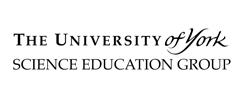- View more resources from this publisher
 University of York Science Education Group (UYSEG)
University of York Science Education Group (UYSEG)
Sports Science
A Year 11 module from the Salters’ Key Stage Four double award science course. The context for this module is the use of scientific ideas to explain human performance. Students discuss what is meant by being ‘fit’. They compare different uses of the word 'work' and are given a formal definition. Calculations of work done and rate of working lead to measurements of their own power and fitness.
Respiration is introduced as a mechanism for transferring energy in tissues. Aerobic and anaerobic respiration are compared. The function of the lungs and the circulatory system in transporting materials around the body is studied.
Ideas about levers are revised. Tests with a model arm show the function of bones and muscle pairs in producing movement. Work on turning moments leads to ideas about balance and centre of mass. These ideas are applied to a comparison of different high jump techniques.
Ideas about potential and kinetic energy are reviewed. Students measure the energy transferred in a variety of simple tasks. Pole vaulting and free fall parachuting are used as contexts for analysis of energy conversions, leading to the concept of conservation of energy.
Section 1: A question of sport
Students discuss what is meant by being ‘fit’. They compare different uses of the word “work” and are given a formal definition. Calculations of work done and rate of working lead to measurements of their own power and fitness.
Section 2: The human engine
Respiration is introduced as a mechanism for transferring energy in tissues. Aerobic and anaerobic respiration are compared. The function of the lungs and the circulatory system in transporting materials around the body is studied.
Section 3: A living machine!
Ideas about levers are revised. Tests with a model arm show the function of bones and muscle pairs in producing movement. Work on turning moments leads to ideas about balance and centre of mass. These ideas are applied to a comparison of different high jump techniques.
Section 4: Faster and higher
Ideas about potential and kinetic energy are reviewed. Students measure the energy transferred in a variety of simple tasks. Pole vaulting and free fall parachuting are used a contexts for analysis of energy conversions, leading to the concept of conservation of energy.
Show health and safety information
Please be aware that resources have been published on the website in the form that they were originally supplied. This means that procedures reflect general practice and standards applicable at the time resources were produced and cannot be assumed to be acceptable today. Website users are fully responsible for ensuring that any activity, including practical work, which they carry out is in accordance with current regulations related to health and safety and that an appropriate risk assessment has been carried out.
Downloads
-
Sports science 6.5 MB





